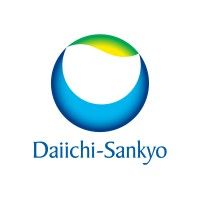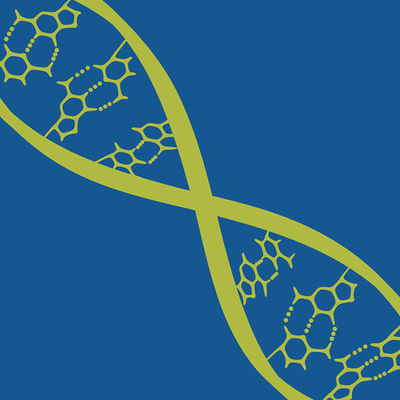预约演示
更新于:2025-05-07
Circulating Neoplastic Cells
循环肿瘤细胞
更新于:2025-05-07
基本信息
别名 CTC、Cell, Circulating Neoplastic、Cell, Circulating Tumor + [53] |
简介 Exfoliate neoplastic cells circulating in the blood and associated with metastasizing tumors. |
关联
15
项与 循环肿瘤细胞 相关的药物作用机制 CSF-1R拮抗剂 [+2] |
最高研发阶段批准上市 |
首次获批国家/地区 美国 |
首次获批日期2019-08-02 |
靶点 |
作用机制 PDL1抑制剂 |
原研机构 |
最高研发阶段批准上市 |
首次获批国家/地区 美国 |
首次获批日期2016-05-18 |
作用机制 CDK4抑制剂 [+1] |
原研机构 |
最高研发阶段批准上市 |
首次获批国家/地区 美国 |
首次获批日期2015-02-03 |
255
项与 循环肿瘤细胞 相关的临床试验NCT06904625
Comparison of Different Methods of CAPTure of Circulating Tumour Cells (CTC) in Patients With Metastatic Breast or Prostate Cancer
This trial is a pilot, prospective, single-center study conducted in a population of patients with metastatic breast cancer (whatever the immunohistochemical subtype) or metastatic prostate cancer. The aim of this exploratory study is to compare the sensitivity of three different techniques (CellSearch®, Parsortix® and SmartCatch®) in detecting circulating tumor cells (CTCs). After the patient's agreement, and before starting anti-tumor treatment, a blood sample will be taken using the 3 different CTC detection techniques.
Each patient will participate in the study for one day.
A total of 36 evaluable patients (18 patients with metastatic breast cancer and 18 patients with metastatic prostate cancer) will be included in this interventional study.
Each patient will participate in the study for one day.
A total of 36 evaluable patients (18 patients with metastatic breast cancer and 18 patients with metastatic prostate cancer) will be included in this interventional study.
开始日期2025-04-01 |
申办/合作机构 |
NCT06488365
In Vivo Liquid Biopsy for Early Detection of Metastatic Melanoma
The Cytophone is a first in the world patented system to identify and count single circulating melanoma cells in blood circulation inside the human body. The Cytophone has a unique capability to find rare melanoma cells in the blood by an assessment of 100-500 times greater amounts of blood volume than routine blood tests. The important benefit of the Cytophone diagnosis is that the test does not require injection or any skin incision (i.e., non-invasiveness). The goal of this clinical trial is to demonstrate evidence of the capability of the Cytophone test to indicate a risk of metastasis and define CTC counts that correlate with melanoma recurrence, progression of metastatic disease, and therapy efficacy. The investigators believe that clinical trials will provide evidence that the Cytophone can diagnose risk of melanoma metastasis and recurrence earlier than existing methods.
开始日期2025-02-11 |
申办/合作机构- |
NCT06940778
LIQUID BIOPSY FOCUSING ON CIRCULATING TUMOR CELLS (CTC) AND CIRCULATING TUMOR DNA (CTDNA) AS A PRECISION MEDICINE TOOL IN GASTROINTESTINAL TUMORS
This is a prospective, observational, multicenter cohort study. Our main objective is to to evaluate the use of CTCs and ctDNA with prognostic factors in locally advanced rectal tumors treated with total neoadjuvant therapy (TNT), recently adopted as clinical practice, and to analyze the functionality of CTCs and ctDNA in the follow-up of locally advanced and metastatic pancreatic and gastric tumors.
Secondary objectives:
* To verify the influence of CTC and ctDNA kinetics on the response to treatment of the three tumors;
* To correlate RAD23B/TYMS findings and CTC kinetics with DFS in locally advanced rectal tumors;
* To correlate HER-2 and PDL-1 expression in CTCs in gastric cancer with progression-free and overall survival;
* To verify the correlation between EGFR methylation in ctDNA of metastatic gastric tumors and PFS and OS;
* Correlate KRAS mutations in ctDNA in locally advanced pancreatic and rectal cancer with progression-free and overall survival;
* Compare the mutational profile of the primary tumor with that of the main components of the liquid biopsy (CTCs and ctDNA), in the three disease scenarios.
Secondary objectives:
* To verify the influence of CTC and ctDNA kinetics on the response to treatment of the three tumors;
* To correlate RAD23B/TYMS findings and CTC kinetics with DFS in locally advanced rectal tumors;
* To correlate HER-2 and PDL-1 expression in CTCs in gastric cancer with progression-free and overall survival;
* To verify the correlation between EGFR methylation in ctDNA of metastatic gastric tumors and PFS and OS;
* Correlate KRAS mutations in ctDNA in locally advanced pancreatic and rectal cancer with progression-free and overall survival;
* Compare the mutational profile of the primary tumor with that of the main components of the liquid biopsy (CTCs and ctDNA), in the three disease scenarios.
开始日期2025-01-10 |
100 项与 循环肿瘤细胞 相关的临床结果
登录后查看更多信息
100 项与 循环肿瘤细胞 相关的转化医学
登录后查看更多信息
0 项与 循环肿瘤细胞 相关的专利(医药)
登录后查看更多信息
613
项与 循环肿瘤细胞 相关的文献(医药)2025-12-01·Current Osteoporosis Reports
Role of Chemokines and Cytokines in Prostate Cancer Skeletal Metastasis
Review
作者: Shiozawa, Yusuke ; Parajuli, Keshab Raj ; Taichman, Russell ; Pienta, Kenneth
2025-04-15·ACS Nano
Discovery of Airway-Administered Ionophores for Mn2+ to Mitigate Lung Metastasis by Targeting Disseminated Tumor Cell
Article
作者: Gao, Zhonggao ; Wang, Xi ; Li, Yunfei ; Yan, Xiaohui ; Wang, Yuming ; Zhang, Zhang ; Wang, Rui ; Zhao, Feng ; Wu, Xuanjun ; Miao, Lin ; Fan, Ni ; Li, Yubo ; Li, Xue
2025-03-01·Global Medical Genetics
The pathogenesis of B-cell non-hodgkin lymphoma associated with HBV (hepatitis B virus) infection is regulated by c-Myc/PD-L1 signaling pathway
Article
作者: Bo, Jian ; Wang, Ying ; Xu, Sai ; Zhao, Yu ; Yang, Jian
85
项与 循环肿瘤细胞 相关的新闻(医药)2025-05-03
·抗体圈
这篇文章于2025年发表在Stem Cells,本文全面概述了当前肿瘤类器官整个工作流程(从采样和培养到药物筛选)的高通量解决方案。此外还探索了可以控制和优化单细胞制备、类器官培养和药物筛选的各种技术,最终目标是确保培养系统的自动化和高效率,并确定更有效的肿瘤治疗药物。摘要:肿瘤类器官已成为患者来源组织的理想体外模型,因为它们在一定程度上概括了源肿瘤组织的特征,为个性化肿瘤治疗提供了潜力,并在药物研发中显示出巨大的前景。然而,建立和应用该模型涉及多个劳动密集型和耗时的实验步骤,并且缺乏标准化的协议和统一的识别标准。因此,高通量解决方案对于肿瘤类器官模型的广泛采用至关重要。本综述全面概述了当前肿瘤类器官整个工作流程(从采样和培养到药物筛选)的高通量解决方案。此外,我们探索了可以控制和优化单细胞制备、类器官培养和药物筛选的各种技术,最终目标是确保培养系统的自动化和高效率,并确定更有效的肿瘤治疗药物。1.背景介绍合适的体外疾病模型对于未来的研究至关重要。基于三维(3D)细胞培养技术的肿瘤类器官培养系统已成为一种很有前途的肿瘤模型,能够模拟人体内肿瘤的生长和发展。该系统利用体内基质类似物形成的3D支架来概括体内肿瘤微环境(TME);这是通过向从患者来源的手术、穿刺组织或体液样本中获得的肿瘤细胞中添加各种生长因子和小分子抑制剂来实现的。这种方法能够诱导和培养具有肿瘤特性的类器官。肿瘤类器官培养系统表现出源组织的高可复制性和稳定性,使其成为迄今为止最好的体外 3D模型。患者来源的类器官形成异质微结构。异质性有助于研究人员研究肿瘤发展的机制并进行药物筛选和疗效评估。 然而,肿瘤类器官培养系统的建立和应用受到实验作复杂、时间和人力成本昂贵以及缺乏标准化流程和统一鉴定规则的阻碍。这些限制强调了对高通量解决方案的需求,以促进肿瘤类器官模型的广泛采用。与其他肿瘤模型相比,类器官具有快速培养和有效模拟器官发生及其生理和病理状态的优势。为了最大限度地发挥这些优势,在培养过程中需要一系列高通量解决方案,以提高准确性和效率。肿瘤类器官作涉及几个可以高通量方式解决的关键步骤,包括生物样本处理、图像采集、药物筛选和细胞活力评估。本综述旨在全面概述用于肿瘤类器官培养的高通量解决方案,并讨论其应用、局限性和未来前景。这些关键步骤的高通量解决方案可以更精确地控制和优化类器官培养过程的关键方面,例如单细胞制备、细胞培养和药物筛选。这种方法提高了培养系统的效率,对发现更有效的肿瘤疗法具有重要意义。2.肿瘤类器官培养技术及应用类器官培养技术是体外3D培养技术的延伸,其关键区别在于提供了自我更新的条件,支持干细胞的自我维持和分化,从而更好地模拟人体的生理环境。值得注意的是,类器官可以维持细胞的生理功能,包括增殖、凋亡和分化。相比之下,传统的2D培养仅限于形成细胞单层,无法复制人体组织的3D结构,细胞在传代过程中往往会失去原有的生理功能。不同物种和品系的动物模型表现出不同的生理特征和反应,但受到高异质性和高成本的阻碍。相反,肿瘤类器官来源于患者来源的肿瘤组织。培养这些类器官涉及添加对相应癌症类型具有特异性的生长因子,从而建立一个概括体外微环境的体外肿瘤模型。这种方法不仅可以直接再现肿瘤的生长过程,还可以单独再现源肿瘤组织的特征,使肿瘤类器官模型能够更准确地捕捉个体间差异,为个性化肿瘤治疗提供基础。肿瘤类器官培养系统包括基质凝胶和维持类器官生长和活力的生长因子混合物。基质凝胶主要由胶原蛋白、巢蛋白、层粘连蛋白和其他成分组成,用作肿瘤细胞的3D支架,概括了天然细胞外基质(ECM)的关键特性,例如纤维组成、渗透性、空隙大小和机械稳定性。这种仿生环境能够在体外复制复杂的细胞-细胞和细胞-ECM相互作用,为支架上的细胞聚集、增殖和迁移提供理想条件,从而准确模拟人体的内部环境。除了使用基质凝胶外,肿瘤类器官模型的成功构建还依赖于补充特异性生长因子和小分子抑制剂(图1)。例如,肺癌类器官需要在培养基中添加表皮生长因子(EGF)以促进类器官增殖,而R-Spondin-1、Noggin和其他因子是维持干性所必需的。此外,成纤维细胞生长因子7(FGF7) 和FGF10是促进干细胞向细胞谱系远端分化所必需的。培养系统的另一个重要组成部分是小分子抑制剂,例如抑制上皮-间充质转化的A83-01和SB202190,它通过靶向丝裂原活化蛋白激酶信号通路来抑制细胞分化。值得注意的是,添加这些因子比使用血清更费力,而且由不同组织来源构建的类器官所需的特定因子并不相同,需要根据每个组织的特性进行调整。图1:类器官培养系统。根据肿瘤细胞的来源,需要向肿瘤类器官培养基中添加不同的细胞因子组合(例如,R-Spondin-1、Noggin、FGF7、FGF10、EGF、Wnt-3a、Y-27632、烟酰胺、N-乙酰-L-半胱氨酸、A83-01 和 SB202190)以促进或抑制参与类器官形成的信号通路以获得所需的类器官。建立类器官涉及一系列步骤,包括采样、培养和后续评估。肿瘤组织通常从手术标本、穿刺活检和内窥镜活检中获得,突出了构建类器官模型只需要最少数量的细胞的优势。值得注意的是,在组织采样和运输过程中存在污染风险,因此需要在样品管中添加抗生素,例如青霉素-链霉素。加工的初始步骤包括将肿瘤组织酶消化成单细胞,通常通过包括胶原酶、DNAase和透明质酸酶的方案。随后将消化的悬浮液离心以获得细胞沉淀,然后用红细胞裂解物处理以产生肿瘤的单细胞悬浮液。接下来,将单细胞悬液与基质凝胶混合并接种到孔板中,然后加入肿瘤类器官培养基。然后通过多种方法鉴定培养的类器官。首先,在细胞水平上评估细胞形态、排列和结构,以确定肿瘤类器官和源组织之间的一致性。其次,使用特异性抗体进行免疫组织化学染色来识别蛋白质水平肿瘤标志物的表达。第三,利用高通量测序技术在基因水平上分析基因表达谱和基因突变。最后,通过比较肿瘤组织和类器官对化疗药物的反应,评估肿瘤类器官在药物筛选和治疗策略开发中的效用(图2)。图2:类器官培养过程。将患者来源的肿瘤组织(手术、组织活检)或液体活检标本经过一系列处理后制成单细胞悬液,并根据一定数量的细胞制作种子板。当类器官形成时,可以进行药物敏感测试以观察细胞活力,并且可以进行数据收集和分析。类器官培养方案的标准化对于确保实验结果的可靠性至关重要。在肿瘤类器官培养系统的背景下,从单细胞采集到类器官培养、药物筛选和验证,每一步都必须遵守标准化作程序(SOP)。这种方法包括实验室前准备、实验室方案和实验室后处理。肿瘤类器官模型的构建大致可分为以下阶段:肿瘤组织消化和解离、分离的肿瘤干细胞与基质凝胶混合、将它们接种在孔板中,以及添加富含细胞因子的培养基以促进类器官生长。这个过程需要大量的劳动力和时间成本,从而限制了类器官的适用性。肿瘤类器官培养的第一步涉及确定合适的细胞来源。肿瘤细胞可以来自患者样本、细胞系或干细胞。纯化的肿瘤细胞通过消化、分离和培养获得。然而,这个过程充满了挑战。不同癌症类型的消化时间差异很大,例如,乳腺肿瘤组织由于其纤维含量高,需要4-6小时,而胃肠道肿瘤可以在1-2小时内消化。此外,不同的癌症类型需要不同的消化酶系统。这些因素给研究人员带来了障碍,包括消化组织的等待时间延长、过度消化导致的细胞活力低以及消化不足,这会阻碍单细胞悬液的产生,从而影响下游实验。这些挑战的出现凸显了对一种能够产生单细胞悬液的简化、高效和可靠的消化方法的需求。细胞培养需要精确控制细胞密度和分布,以确保肿瘤细胞的增殖。细胞计数和活力评估对于确定生成单细胞悬液后的活细胞数量是必要的。然后将相应的培养系统基质凝胶与单细胞悬液混合并接种在孔板中。虽然这个过程相对简单,但仅通过体力劳动在短时间内产生大量类器官,同时保持对每个类器官球体质量的控制是具有挑战性的。这种限制在高通量药物敏感性检测中尤为明显,其中在384孔板或更高通量规格中接种类器官需要自动化机器。随后,建立了类器官培养系统,其中细胞悬液接种在3D基质中,以模拟肿瘤的体内生长环境并诱导类器官形成。评估药物对肿瘤类器官的影响需要多方面的方法,包括药物制备、药物筛选和数据分析。药物制备过程包括选择、溶解和稀释药物,以确保其质量和浓度满足实验要求。药物筛选包括用药物治疗肿瘤细胞并观察其疗效和毒性等参数。数据分析涉及组织和分析实验数据,以阐明药物的潜在机制及其治疗效果。培养和标准化的困难困扰着传统的类器官培养。此外,大小和形状可变的类器官生产通常既耗时又昂贵,这使得大规模生产成为一项重大挑战。因此,高通量和自动化作是在标准化、减少劳动力和降低成本方面实施类器官培养进步的关键解决方案。为了确保类器官培养的整个过程以高精度和高效率进行,必须设计高通量解决方案,同时考虑自动化、高通量和可重复性等因素。此类解决方案的示例包括使用微流体技术进行类器官植入,用于药物治疗和检测的自动化机器人,用于细胞状态分析的高分辨率成像,以及用于结果处理的数据分析软件。通过实施高通量SOP,可以最大限度地减少实验误差和不确定性,并提高实验的可信度和可重复性。3.当前离体类器官培养涉及的底物技术和适用于各种应用的高通量解决方案目前正在研究高通量解决方案,以减轻类器官培养过程中的劳动密集型和关键步骤。这些解决方案大致可分为分离和培养、药物筛选和活性评估。这些解决方案的形式包括集成高通量功能的设备、方法和软件。高通量设备和方法包括自动化样品处理设备、微流体、器官芯片、3D打印技术和高内涵成像系统。High-throughput软件可以快速准确地获取和分析大量的实验数据,从而提高数据处理的效率和准确性。特别是成像系统,可以同时获取各种类型的生物信息,如细胞形态、荧光强度和细胞活性,从而更全面地了解药物对肿瘤细胞的作用机制和疗效。微流体是指在数十到数百微米的通道中处理微量流体(10-9-10-18 l)的系统技术。该技术有四个主要应用:分子分析、生物传感、分子生物学和微电子学。在生物学和医学中,微流体技术在细胞培养、单细胞分析和临床诊断中发挥着越来越重要的作用。微流体技术在生物学研究中的应用可以显著减少样本量,从而降低实验成本,实现生物样本的快速和高通量检测,最大限度地从少量样本中收集更多信息,创建更好的人体生理病理环境模拟,并促进更深入和全面的研究。例如,循环肿瘤细胞(CTC)的数量可以表明肿瘤的恶性程度和转移风险;然而,外周血中CTC的稀缺阻碍了它们的应用。尽管如此,随着微流控技术的不断发展,已经出现了几种基于微流控的CTC捕获技术。值得注意的是,Jinho Kim等人构建了一种微流控装置(SIM-Chip),它可以从全血中富集CTC并识别和分离它们。类器官微流控技术将类器官和微流体技术集成在一起,通过在微流控芯片上设计微通道和反应单元来实现类器官的体外培养和模拟。该技术利用微流体设备和计算软件精确控制微环境,模仿 TME来研究肿瘤间充质相互作用。微流体技术有助于将细胞、药物和营养物质精确、及时地输送到癌细胞。此外,微流体技术允许自动控制液体输送速度、浓度和持续时间,从而能够使用药物混合物和营养物质进行动态筛选。类器官微阵列是一种基于微流控的类器官培养平台,可模拟体内TME,从而能够研究肿瘤生长和转移。这项技术需要在后续实验和分析之前构建微流体通道和细胞培养室。此外,3D打印技术可以与微流体相结合,创造创新的解决方案。3D打印技术是一种增材制造方法,通过堆叠层从计算机模型数据制造 3D物理对象。3D打印技术的出现为微流体提供了新的可能性。首先,3D打印技术为微流控芯片制备的标准化和大规模生产提供了广阔的前景。其次,3D生物打印技术能够精确控制细胞和生物材料的分布,更好地模拟生物组织的复杂微观结构。3D生物打印技术可以创建高分辨率的微结构,以准确再现TME的复杂特征。此外,这些3D打印模型可用作肿瘤生物学中多功能研究和应用的临床前模型。通过将3D打印技术与微流控相结合,可以快速构建许多稳定的肿瘤类器官模型,最大限度地发挥类器官模型的优势。高内涵筛选(HCS)是一种基于成像的分析方法,它利用自动成像和数据分析在单细胞水平上提供具有高分辨率、高通量和高信息含量的无偏倚多参数数据。HCS能够在各个水平(包括细胞和分子水平)捕获图像和提取信息,从而可以检测基因表达、蛋白质定位和形态的变化。类器官培养完成后,可以采用高内涵成像技术,包括通过自动高通量摄影(例如高速显微镜成像)获取类器官数据。HCS的主要功能是以更少的单元、更短的时间和更高的吞吐量快速获取大量数据,同时减少劳动力消耗。该技术可以收集多通道数据,包括细胞形态、状态、数量和功能信息。此外,HCS可以与药物输送装置集成,以实时观察细胞对药物的即时反应。近年来,人工智能(AI)技术大幅发展。在医疗领域,人工智能可以促进药物的设计并有助于癌症检测、诊断和治疗优化等应用。高通量实验和AI技术在医学中的整合越来越受到关注。AI可以在生成肿瘤类器官的整个过程中得到利用,从构建到应用。基于AI的自动化可以帮助形成稳定的类器官球体。结合图像识别和数据分析的智能算法可以快速分析实验结果并得出结论。各种基于AI的图像识别算法也可以实现类器官的高通量应用。配备AI模块的智能分析系统可以根据收集的数据类型和分析目的选择合适的数据分析方法。表1总结了高通量底物技术的特点、优点和缺点。表1. 肿瘤类器官培养系统中的高通量底物技术4.类器官培养过程的高通量解决方案高通量技术在组织解离中的应用将患者来源的肿瘤组织团解离成单细胞是肿瘤类器官培养的关键初始步骤。此步骤可确保收获的单细胞的数量和活力,并为后续实验提供稳定的数据源。已经开发了全自动组织处理器和单细胞悬液制备仪器等仪器,以促进单细胞的高通量自动收获。这些仪器可以通过机器研磨和酶促反应将人类肿瘤组织制备为单细胞。组织解离剂结合了机械研磨和酶消化,可以从组织中分离单细胞悬液,并将组织块制备为匀浆。这些仪器利用自动化系统来定制应用,例如温度、时间和速度,以实现标准化过程作和更轻松的样品处理。这些仪器的优点包括提高精度和效率以及减少细胞损伤。该仪器可同时处理多达8种不同的组织和样品,样品量从20毫克到4000 毫克不等,并且易于作。例如,只需将组织样品放入分离管中,通过隔膜封闭的孔添加酶和其他溶液,并设置所需的程序,即可使机器通过研磨过程自动处理组织样品,从而获得高质量的单细胞悬液或亚细胞材料。例如,Jungblut等人使用仪器成功地将小鼠肺组织加工成高质量的单细胞悬液。自动化组织样本采集是肿瘤类器官培养的另一个重要方面。使用机器人辅助技术或自动采样设备可以有效地收集和处理大量样品。实施自动化组织采集系统和机械臂辅助作可以提高样本采集的速度和准确性。此阶段用于组织处理的仪器可以满足其中的大部分需求。随着人工智能技术的飞速发展,组织的自动化处理也将越来越智能化和个性化。未来,该过程可能不只涉及简单的消化,还涉及消化过程中的自动传感装置,以实时自动调节温度、酶浓度和其他条件,这是一个值得的未来研究方向。高通量技术在类器官植入中的应用类器官培养是模拟肿瘤发展过程的关键步骤。然而,类器官培养过程中的手动作会导致单个类器官液滴的组成、形态和功能发生显着变化,这可能会影响最终的实验结果。此外,手动培养的效率有限,因此在短时间内制备大量类器官具有挑战性。相比之下,将自动化和标准化引入高通量培养系统,例如基于微流体技术的自动化类器官培养平台,可以标准化和均质化每个类器官,从而实现类器官的单分散和高通量培养。这种方法可以更好地模拟肿瘤的恶性表型和转移能力。自动化细胞培养和监测可以显著提高肿瘤类器官培养的效率和准确性。例如,使用微量滴定板和自动化设备进行类器官培养和检测可以简化流程,确保一致性和可重复性。Jiang etal.开发了一个自动化类器官平台,集成了微流体连接的3D打印技术,能够通过自动化作快速制造和培养正常组织和肿瘤类器官。在这项研究中,将原代组织来源的细胞与基质凝胶混合,并将所得细胞悬液注入微流控系统中,通过微流控液滴打印机产生均匀的细胞负载基质凝胶液滴。液滴在微流体管道内糊化,以高通量产生均质的类器官前体。然后将这些前体打印到96孔板中,这种设计有助于在培养过程中对类器官进行高通量成像表征。值得注意的是,这些类器官前体在1周内以更低的成本和更短的时间成功培养,并已准备好进行药物测试。结果表明,通过这种方法制备的肿瘤类器官表现出81%的预测准确性,表明在模拟患者肿瘤对抗癌药物的反应方面具有高度的可重复性。Du etal.利用基因工程人类结肠类器官建立了一个小型化3D类器官培养平台,实现了高通量筛选。研究人员采用了多点组合分液器(也称为液体分液器),将细胞-凝胶混合物或药物试剂自动分液到384/1536孔板中,并确保准确和一致的分液。这种方法产生了快速和高质量的检测数据。3D类器官培养平台已被证明可用于大规模初级化合物筛选,通过促进细胞中化合物活性的高通量筛选和在 384 孔板中小型化类器官,在 1536孔板中实现超高通量测序。此外,结合配备冷却台和移液臂的液体处理机器人,可以在常规分析开发中测试多种浓度的基质凝胶,从而快速优化类器官生长条件。带有液体处理机器人的全自动工作站可用于类器官的自动接种。还开发了一种微流体装置来图案化水凝胶,利用层流在两侧形成疏水通道,同时在中间产生亲水通道。当液体水凝胶注入亲水区域时,它被周围的疏水区域限制在这条路径上。该设备为培养的细胞和组织提供了受控的 3D微环境,克服了与微柱和小压力屏障相关的昂贵且复杂的作挑战,从而提高了微流体细胞培养分析的效率。通过在设备内培养人脐静脉内皮细胞来证明该方案的可行性。光刻技术是制造器官芯片中广泛采用的技术,其中利用光刻胶在光的影响下将光掩模的图案转移到芯片上,从而能够生产具有任意图案的器官芯片。值得注意的是,胡 等人开发了一种用于肺癌类器官培养的集成超疏水微孔阵列芯片(InSMAR-chip),能够同时培养数百个类器官并促进高通量培养和分析。随着高通量技术的不断进步和改进,未来将开发越来越复杂和精细的类器官模型,并且也有可能模拟完整的人体系统并从这个角度考虑肿瘤的治疗。因此,作品的精细化将增加。由于在此过程中人为错误是不可接受的,因此有必要开发机器来执行这项工作。然而,与此同时,用机器取代体力劳动也有其自身的问题,例如,类器官中可能存在细胞团块或微小组织,导致植入不均匀。将来,可能需要开发更多的技术,例如流体动力学,以使他的分布更加均匀。高通量技术在药物筛选中的应用药物警戒筛选和验证是高通量解决方案的重要组成部分。培养的类器官为药物筛选提供了一种很有前途的工具,因为它们可以概括体内TME,从而能够更准确地预测药物疗效。与机器学习算法集成的自动化药物筛选平台可以快速准确地检测药物对肿瘤类器官的影响。通过比较不同药物治疗下肿瘤类器官的生理参数,可以初步确定具有潜在治疗效果的药物。类器官建模在肽药物筛选中的现有应用和前景已在以前的综述中进行了系统描述。我们在这里没有讨论传统的类器官药物筛选方法,只关注应用高通量类器官药物筛选。Schuster等人开发了一种可以自动化的微流体3D类器官培养平台,利用微流体技术和编程软件实现动态的、时间依赖性的类器官药物输送和联合治疗。此外,该平台还与图像分析仪相结合,可实时监测类器官形态和活力。通过对患者来源的胰腺肿瘤类器官进行药物筛选来验证微流控平台的可行性,这表明联合和动态治疗在治疗肿瘤类器官方面比恒定的单药方案更有效。现有研究主要集中在药物梯度或两种药物的组合上。然而,Li等人开发了一种高通量、开放空间、可重复使用的多层微流体芯片,用于基于类器官的组合药物筛选,以识别日益复杂的药物组合。该微流控芯片具有连接到数据收集工具的可编程流量控制系统。该芯片由一个入口层和多个分散层组成,能够同时从入口层加载不同的样品,然后样品溶液流入下面的分散层。单个微泵控制每个通道中的液体流动,最大限度地减少细胞稀释,并有助于通过显微镜技术进行组织学分析。Komen等人设计了一个由药物层和细胞层组成的微流控平台。两层由膜隔开,两个通道以交叉形状相交,允许细胞从交叉处接种。完成后,底部通道关闭,两个独立的注射泵调节药物层中的药物浓度,然后通过膜扩散到下部空间,从而提供动态药物给药。Zhai等人报道了一种具有创新控制结构和芯片设计的数字微流控系统。他们的药物分配器将所需的药物剂量预加载到芯片上,将其与细胞悬液滴混合,形成具有不同药物浓度的药物筛模型,最后将混合物输送到培养细胞的位置。该技术使用两种化疗药物进行了验证。与传统的96孔板相比,该系统具有多项优势,包括减少细胞和药物消耗以及最小的空间要求。在器官芯片方法中,Ryuji Morizane 的团队通过开发类器官模型来提高类器官质量和疾病模型保真度,为肾脏疾病研究做出了重大贡献。Ryuji Morizane的团队报告了一种可以在微流控芯片上流动培养的肾类器官,他们使用内源性内皮祖细胞为与组织工程血管构建相关的研究提供了新思路。Ryuji Morizane的团队在类器官芯片中增加了流体流动,并使用该模型测试了两种新药,突出了类器官模型在阐明治疗测试和发现的复杂疾病机制方面的巨大潜力。值得注意的是,药物筛选是一个备受关注的领域,一个关键问题是添加药物后细胞活力状态的评估。药物筛选的最终评价是细胞对药物的反应,我们经常评估细胞的状态。经典方法是基于细胞毒性的MTT和CCK-8 测定。随着技术的发展,检测灵敏度也提高了,可以使用基于ATP酶活性的方法。可用于这些方法的商业化试剂盒;然而,一个缺点是这些方法不是实时进行的,并且不能反映给药早期细胞的状态;因此,需要新的解决方案,例如C3蛋白和ATP比率。随着研究技术的进步,研究人员可用的工具也在进步。现在可以将CFP-Asp-Glu-Val-Asp(DEVD)-YFP 融合蛋白转染到细胞中以确定caspase-3表达水平,然后使用多光子显微成像进行数据采集,以获得有关肿瘤对药物敏感性的定时或延迟数据。此外,Ryuji Morizane的团队利用基因编码的荧光生物传感器PercevalHR,该传感器可以感应ATP:ADP比率,从而反映细胞能量代谢的状态,用于类器官中的高通量药物筛选。该技术在肾脏类器官中的应用,其中药物的肾毒性评估,表明它可能适用于未来的高通量药物筛选。值得注意的是,拉曼光谱也可用于研究癌细胞中的药物代谢。由于自然界中存在或由人类合成的化合物数量庞大,因此有必要进行大规模的实验以选择最好的药物。由此可见,近年来药物筛选的高通量应用发展迅速,许多制药企业已经拥有了进行高通量药物筛选的全套设备和方法。未来的高通量技术发展可能侧重于降低成本和精细化模型,以解决药物分子的复杂结构,并使数据能够与人工智能、大数据分析和其他技术相结合,全面研究药物的机制、疗效和安全性。对于靶向药物,需要一种更复杂的方法来评估药物的活性,以评估其疗效,同时还要观察对人类的毒副作用。还有一些药物需要与其他药物或其他疗法联合才能有效,并且可能需要开发一个更全面的系统来观察治疗过程中或特定阶段的疗效。这可能是未来的趋势,但与此同时,它将需要更高水平的自动化和经济性。类器官培养中的数据采集和数据分析数据采集类器官成像和数据分析过程比2D细胞培养更复杂,增加了对所用成像工具和分析技术的要求。为了客观地呈现类器官的表型和结构并实现高通量类器官药物筛选过程,我们需要将自动化与3D成像和机器学习方法相结合。Ryuji Morizane的团队现在可以通过自动3D成像来绘制肾脏类器官的结构图,从而克服了类器官的复杂结构给高通量药物筛选带来的困难。细胞成像是了解肿瘤类器官培养状态和评估药物疗效的重要工具。高分辨率显微镜和图像分析技术可在培养和药物筛选过程中实现快速准确的细胞形态、数量和活力检测。在我们的实验方案中,采用活细胞荧光显微镜来获取类器官数据。使用在平移台上配备类器官平台的倒置显微镜进行观察,并设置了一个外壳来控制类器官的细胞环境并保持类器官培养所需的温度、湿度和CO2气体成分。ImageXpress 软件用于采集图像。显微镜连接软件支持在不同位置、z堆栈和多个颜色通道进行自动图像采集。此外,光片显微镜已被用于通过融合多视图图像来评估肿瘤类器官的药物疗效,从而实现完整的3D断层扫描。这种方法补偿了在3D结构样品最深处获得的图像质量低下,并使荧光分子能够到达直径达1mm的类器官的核心,从而能够从不同区域收集相关数据。数据分析在培养过程中会产生大量数据,包括有关细胞活力和生理指标的数据。数据可视化技术将复杂数据转换为直观的图表,便于理解和分析。这些数据为后续的临床试验和药物开发提供了有价值的参考。已使用连接到配备MATLAB脚本的计算机的显微镜来分析荧光图像以量化细胞凋亡,从而为每个类器官提供所需荧光标记物的平均荧光强度和相应的图像。AI分析是类器官培养中数据分析的重要工具。通过利用机器学习算法,AI分析可以分析和预测用于药物筛选的实验数据,使我们能够了解药物对肿瘤类器官的作用机制,预测药物疗效和副作用,并优化药物筛选策略。AI图像分析软件(Aivia)为从2D到5D的图像可视化、分析和数据组合提供了一个全面的平台,能够在几分钟内快速处理和重建高度复杂的高质量图像。AI图像分析同时集成了传统的图像分析和深度学习算法,通过专用软件从数字显微镜图像中提取特定数据,为图像分析技术开辟了新的途径。下图(图3)说明了如何将上述高通量技术用于组织解离、类器官生长、药物筛选、数据分析和数据采集。图3:通过高通量技术进行组织解离、类器官植入、药物筛选、数据分析和数据收集的整个过程。(A) 在初始样品制备步骤中,通过组织解离器处理患者来源的肿瘤组织以获得单细胞悬液。(B) 使用微流体技术进行3D打印,并将所得类器官植入96孔板或微流体芯片中。(C) 在药物筛选过程中,药物可以通过药物打印机自动给药或微流体输送。(D) 然后通过高内涵成像系统获取图像数据,并通过AI分析进行数据分析。在类器官培养过程中,我们发现细胞的异质性显著,包括活体和死亡的测定可能显示受到多种因素的干扰。因此,可能需要开发排除组织和个体患者之间类器官形成的复杂因素和差异的算法。随着成像技术的发展,用于评估细胞活动的图像处理算法存在困难,未来的图像处理可能需要更高的计算量,因此需要大型服务器提供更强大的算法。此外,可以使用基于数据优化的计算模型来解决能耗相对较小的数据分析问题。5.总结与展望肿瘤类器官培养系统在体外概括TME具有广泛的应用。通过在体内模拟TME,该技术可以更准确地预测药物对肿瘤的影响。引入高通量解决方案有助于实现从培养到药物筛选的加工过程的自动化和放大,从而提高培养效率和筛选准确性。目前,类器官技术无法完全概括TME。此外,缺乏相关行业的支持阻碍了微流控技术的广泛应用,微流控技术无法取代传统的类器官培养平台。天然衍生基质的化学性质,例如温度敏感性和室温下的聚合反应,会导致微流体通道堵塞,这也是当前微流体和高通量技术面临的挑战。此外,缺乏对微流体中负载的Matrigel的低温控制是3D打印技术的一项重大挑战。患者来源的肿瘤样本的有限可用性也阻碍了浓度依赖性评估和联合疗法的评估,突出了提高患者样本细胞提取效率和标准化培养技术的需求。类器官目前正在快速发展,未来将开发越来越多的复杂模型,例如Ryuji Morizane团队制作的类器官芯片模型,以解决疾病发展的真实情况。此外,高通量解决方案应该相对较快地开发。高通量实验也将变得更加快速、准确、自动化,并且能够处理大规模实验数据。未来,加强肿瘤类器官培养系统与高通量实验(如药物筛选)的整合,对于确定更有效的肿瘤治疗和药物至关重要。识别微信二维码,添加抗体圈小编,符合条件者即可加入抗体圈微信群!请注明:姓名+研究方向!本公众号所有转载文章系出于传递更多信息之目的,且明确注明来源和作者,不希望被转载的媒体或个人可与我们联系(cbplib@163.com),我们将立即进行删除处理。所有文章仅代表作者观点,不代表本站立场。
2025-04-29
·今日头条
“医生,我的肿瘤切干净了吗?还会不会复发?”这是萦绕在每位癌症术后患者心头的生命之问。残酷的数据令人揪心——全球每年约1000万癌症患者术后复发,即便采用手术联合免疫治疗的前沿方案,仍有超半数患者在5年内面临复发风险,生存率如骤降的悬崖。更令人痛心的是,复发后有限的治疗手段,常将患者推入“化疗—耐药—病情进展”的绝望循环。
有人说:“99%的癌症患者不是败于疾病本身,而是倒在对癌症的无知、恐惧与盲目应对上。”但请记住:癌症绝非不可战胜的宿命!医学的进步每天都在改写抗癌历史,每一位患者的抗争都在为生命创造奇迹。
对于肿瘤患者及其家属而言,从确诊、治疗到康复的每一个环节都至关重要。临床正规治疗,如手术、放疗、化疗等,是抗击癌症的关键手段。但作为患者,除了积极配合这些治疗,还应具备“自救”能力,如此才能在抗癌这场战役中赢得胜利。
一、预防癌症复发/转移,这四大因素需牢记
精准监测:对癌细胞从“模糊追踪”到“分子级锁定”
PART 1
传统影像学检查往往只能在肿瘤形成可见病灶后才能发现复发迹象,而新一代肿瘤监测技术已深入分子层面,实现对微小残留病灶(MRD)和循环肿瘤细胞(CTC)的精准捕捉。
1、
MRD检测
:即微小残留病灶(MRD)检测,是一种用于检测癌症患者体内经过治疗后,残留的少量癌细胞或肿瘤相关异常细胞、分子等的技术手段,主要用作预后指标。在癌症治疗过程中,尽管手术、放疗、化疗等手段可以显著减少肿瘤细胞数量,但仍可能有极少量癌细胞残留在体内,这些残留的癌细胞可能是癌症复发的根源。MRD检测就是为了发现这些用常规临床检测方法难以察觉的微量癌细胞,哪怕仅残留数百个肿瘤细胞也能被识别,为早期干预提供关键窗口期。以便更准确地评估患者的病情、预测复发风险、指导后续治疗方案的制定、评估预后等,从而提高肺癌的治愈率和生存率,改善生活质量。例如,在结直肠癌患者术后监测中,MRD阳性患者复发风险比阴性者高5-8倍,及时介入免疫治疗可使无复发生存率提升30%以上。
2、
CTC检测
:即循环肿瘤细胞(Circulated Tumor Cell,CTC)检测,这是一种源自原发肿瘤或转移灶,隐藏后进入外周血液循环的恶性肿瘤细胞。通过检测血液中的CTC,可评估肿瘤的存在、进展情况以及治疗效果,其临床意义包括:可用于肺癌的早期诊断、用于肺癌治疗反应的监测、评估肺癌的复发及转移等。研究显示,肺癌患者治疗前后CTC数量变化与预后显著相关,治疗后CTC持续阳性者转移风险增加4.2倍。
▼各类癌症复发率的评估
主动防御:癌症疫苗开启“免疫记忆”新纪元
PART 2
癌症疫苗突破了传统治疗“被动杀灭”的局限,通过激活人体免疫系统对肿瘤的主动识别与记忆,构建长效防御机制。
比如DC疫苗(树突状细胞疫苗)是目前临床应用最成熟的类型之一。其原理是提取患者自身树突状细胞,在体外负载肿瘤抗原后回输体内,训练免疫系统识别肿瘤细胞。而基于肿瘤基因突变图谱的mRNA疫苗可针对每位患者的独特突变靶点合成抗原,在实体瘤如胰腺癌、卵巢癌的早期试验中,已观察到部分患者治疗后肿瘤标志物持续下降,且未出现严重免疫相关毒性。
细胞军团:免疫细胞疗法的“精准作战”升级
PART 3
免疫细胞疗法通过改造或扩增患者自身免疫细胞,打造对抗肿瘤的“特种部队”,不同技术路线在预防复发转移中展现出独特优势:
1、
NK细胞(自然杀伤细胞)
:作为免疫系统的“巡警”,无需预先致敏即可直接杀伤肿瘤细胞。最新研究显示,定期回输扩增的NK细胞可使肝癌患者术后1年复发率从45%降至28%,其机制可能与清除循环肿瘤细胞及抑制肿瘤血管生成相关。
2、
CAR-T细胞疗法
:通过基因工程赋予T细胞识别特定肿瘤抗原的能力,凭借靶向CD19等表面抗原的精准性,使B细胞淋巴瘤患者复发率降低60%以上。
3、
TCR-T
:同样也是通过基因工程赋予T细胞识别特定肿瘤抗原的能力,TCR-T对隐藏于细胞内的抗原(如MAGE蛋白)更具优势,已在滑膜肉瘤等罕见肿瘤中取得突破。
在2024年黑色素瘤研究学会大会上,IMA203 TCR-T疗法的1b期临床更新数据惊艳亮相。一名51岁男性皮肤黑色素瘤患者(编号A-DL4-03)经治疗后实现完全缓解,成为瞩目的焦点。
该患者与黑色素瘤抗争长达13年,先后尝试达拉非尼+曲美替尼、帕博利珠单抗等5种系统治疗方案,病情却仍持续进展。入组时,其颈部淋巴结存在23mm的目标病灶,盆腔骨骼和肺部亦出现非目标病灶。
接受IMA203 TCR-T细胞治疗后,患者病情显著改善。依据RECIST1.1标准评估,
治疗后24个月内持续无进展,病灶体积缩小78.3%
。正电子发射断层扫描(PET)成像显示,
治疗第15个月时,患者达到代谢完全缓解(CR)
。更令人振奋的是,截至数据统计截止,
该患者持续缓解状态已超两年,展现出IMA203 TCR-T疗法强大的抗癌潜力
。
▲图源“Immatics”,版权归原作者所有,如无意中侵犯了知识产权,请联系我们删除
4、
TIL疗法(肿瘤浸润淋巴细胞)
:从肿瘤组织中分离天然存在的抗肿瘤淋巴细胞,体外扩增后回输,专攻实体瘤微环境。
美国MD安德森癌症中心公布的一项临床试验数据,为经多线治疗无效的转移性癌症患者带来希望。该试验聚焦TIL疗法,纳入8例转移性结直肠癌、5例胰腺癌、3例卵巢癌患者。
结果令人振奋:所有患者的
疾病控制率(DCR)达62.5%
(95%CI 35.4%-84.8%);TIL细胞治疗12周时,
31.3%(5例)患者病情稳定
。此外,患者
中位总生存期(OS)长达18.86个月,中位无进展生存期(PFS)为2.53个月
。
其中,一名晚期胰腺癌患者尤为突出。接受TIL细胞治疗后,
病情稳定长达17个月
;后续又相继接受单药派姆单抗及两种一期临床试验疗法(RAD51抑制剂、针对体细胞ARID1A突变的AZD6738)。令人惊叹的是,自首次接受TIL治疗起,
这位患者已存活4年,展现出TIL疗法联合创新方案的巨大潜力。
▼该患者TIL细胞治疗前后的连续CT图像对比
▲图源“J Immunother Cancer”,版权归原作者所有,如无意中侵犯了知识产权,请联系我们删除
营养干预(如益生菌等):构筑体内“防御微环境”
PART 4
预防癌症复发不仅依赖医学技术,体内微环境的调节同样关键。近年研究发现,肠道菌群与免疫系统密切互动,益生菌干预可通过以下途径发挥作用:
首先,增强免疫识别:乳双歧杆菌等特定菌株可促进树突状细胞成熟,提升其呈递肿瘤抗原的能力。
其次,抑制促炎通路:肠道菌群失衡产生的脂多糖(LPS)可激活NF-κB炎症通路,促进肿瘤转移。
最后,调节代谢产物:益生菌代谢产生的短链脂肪酸(如丁酸)能增强肠道屏障功能,减少致癌物质入血,同时诱导调节性T细胞(Treg)分化,抑制过度炎症反应。
《Nature Medicine》发表的一项1期临床研究(NCT05122546),揭示了益生菌CBM588(一种在日本广泛用于胃肠道疾病治疗的丁酸梭菌菌株)联合疗法治疗晚期转移性肾细胞癌(mRCC)的显著疗效。研究纳入30例局部晚期或转移性肾细胞癌患者,中位年龄65岁(36-84岁),随机分为两组:益生菌联合治疗组(CBM588+卡博替尼+纳武单抗)、对照组(卡博替尼+纳武单抗)。
结果显示:联合治疗组
客观缓解率(ORR)达74%,较对照组20%提升近4倍
(详见下图);
联合治疗组6个月PFS率为84%,高于对照组的60%
,展现出更强的疾病控制能力。此外,
联合治疗组89%(17例)患者、对照组80%(8例)患者出现靶病变缩小,且联合治疗组靶病变缩小幅度中位数为42%,显著高于对照组的20%
。
▲图源“nature medicine”,版权归原作者所有,如无意中侵犯了知识产权,请联系我们删除
二、小编寄语
随着精准医学与免疫治疗领域的不断突破,癌症复发转移的防控模式正发生革命性转变——从传统的单一治疗手段,进阶为多维度整合管理体系。通过MRD(微小残留病灶)与CTC(循环肿瘤细胞)动态监测,能够精准捕捉疾病变化,科学规划个性化干预节点;癌症疫苗可激活机体特异性免疫应答,CAR-T、TIL等前沿细胞疗法则能定向清除残留癌细胞;辅以益生菌调节肠道菌群、优化免疫微环境,多管齐下实现对微小病灶和术后残留癌细胞的高效清除,帮助患者重建免疫防线,将肿瘤复发转移风险扼杀在萌芽阶段,最大限度延长生存周期。
尽管医疗技术日新月异,癌症患者仍需保持高度警惕,积极配合临床治疗。术后可通过免疫细胞疗法、科学饮食调理等方式,进一步降低复发转移风险;定期复查更是不可或缺,有助于及时发现潜在隐患。一旦不幸出现复发或转移,早发现、早干预至关重要,患者应主动追踪国内外最新抗癌资讯,选择规范化治疗方案,为生命争取更多希望。
三、参考资料
[1]YagawaY,et.al.Peritoneal Dissemination and Malignant Ascites in Duodenal Cancer Successfully Treated With Adoptive Cell Therapy Using WT1-and MUC1-Pulsed Dendritic Cells and ActivatedT Cells With No Adverse Effects:ACaseReport[J].Cureus,2024,16(11).
https://www.cureus.com/articles/308954-peritoneal-dissemination-and-malignant-ascites-in-duodenal-cancer-successfully-treated-with-adoptive-cell-therapy-using-wt1--and-muc1-pulsed-dendritic-cells-and-activated-t-cells-with-no-adverse-effects-a-case-report#!/
[2]AmariaR,etal.Efficacy and safety of autologous tumor-infiltrating lymphocy tesinre currento rrefractor yovarian cancer,colorectalcancer,and pancreatic ductaladeno carcinoma.J Immuno ther Cancer.2024Feb2;12(2):e006822.
https://pmc-ncbi-nlm-nih-gov.libproxy1.nus.edu.sg/articles/PMC10840042/
[3]EbrahimiH,et.al.Cabozantinibandnivolumabwithorwithoutlivebacterialsupplementationinmetastaticrenalcellcarcinoma:arandomized phase1 trial[J].NatureMedicine,2024:1-10.
https://www-nature-com.libproxy1.nus.edu.sg/articles/s41591-024-03086-4
本文为全球肿瘤医生网原创,未经授权严禁转载
免疫疗法
2025-04-23
全国肿瘤防治宣传周科学防癌华得森与您同行2025年4月15日-21日是全国肿瘤防治宣传周,今年的主题是“科学防癌,健康生活”。癌症作为威胁人类健康的“头号杀手”,其防治需要全民参与、全程管理。作为国内液体活检领域的领军企业,华得森生物始终以“专注精准诊断,造福肿瘤患者”为使命,通过技术创新推动癌症精准诊疗发展。今天,我们与您一起揭开液体活检的神秘面纱,探索癌症防治的科学之道。科/学/防/癌全国肿瘤防治宣传周癌症防治:早诊早查是关键国家癌症中心数据显示,2022年我国新发癌症病例约480万例,早期筛查可显著提高治愈率。例如,肺癌、乳腺癌等常见癌症若能在早期发现,5年生存率可达70%-90%。然而,传统筛查手段(如影像学、肿瘤标志物)存在局限性:灵敏度低、无法动态监测。液体活检技术的诞生,为癌症防治提供了新突破。通过检测血液中的循环肿瘤细胞(CTC)可实现无创、实时、动态监测,比传统方法提前3-10个月发现肿瘤踪迹。循环肿瘤细胞CTC检测科/学/防/癌全国肿瘤防治宣传周华得森CTC技术——癌症诊疗的“侦察兵”华得森生物自主研发的CytoSorter® CTC检测系统是国内首个获NMPA三类认证的CTC检测产品,填补了国内空白。CTC的临床应用场景:• 早诊预警:5mm以下微小病灶即可检出,助力肺癌、结直肠癌等早诊。• 疗效监测:动态追踪CTC数量变化,评估化疗、靶向治疗效果。• 复发预测:术后CTC阳性提示高复发风险,指导个性化干预。• 辅助诊断:临床上可以通过观察CTC的数量来监测肿瘤发生发展的功能状态。• 预后判断:治疗前用CTC检测对CTC计数可作为PFS、OS的独立预后预测因子,可有效反映患者的预后情况。科学防癌:从认知到行动消除误区:误区1:“活检会导致癌细胞扩散”真相:规范活检可明确诊断,华得森CTC检测技术通过静脉采血实现无创检测,安全性更高。液体活检是一项通过对血液或其他体液中生物标志物(包括循环肿瘤细胞、循环肿瘤 DNA 等)进行分析,以实现疾病检测与监测的技术。该技术具备显著优势,不仅能够有效克服肿瘤异质性,支持多次取样开展动态实时监测,还采用微创或无创的操作方式,具有较高的灵敏度与特异性。尤为重要的是,相较于穿刺活检等传统组织活检技术,液体活检能够规避感染、疼痛、器官损伤以及肿瘤扩散等潜在风险。误区2:“肿瘤标志物高=患癌”真相:肿瘤标志物升高不一定表示患癌症:1. 肿瘤标志物是一类物质,虽然可以用于肿瘤的筛查和治疗疗效的监测,但对肿瘤的特异性有限;2. 肿瘤标志物升高不仅可以在肿瘤性疾病中出现,也可在非肿瘤性疾病中出现,因此不一定表示患癌症;3. 发现肿瘤标志物升高的患者应积极就医,如能通过循环肿瘤细胞检测联合影像学、病理学多维度验证,接受专科医生的解读和判断,可很大程度避免误诊、漏诊。行动指南:高危人群(如吸烟、家族史):定期进行CTC检测,实现超早期筛查。患者管理:治疗后每3-6个月检测CTC,动态监测复发转移风险。健康生活:戒烟限酒,均衡饮食,适度运动,降低癌症风险。结语癌症防治是一场全民战役,需要科学技术的支撑与公众认知的提升。2025年全国肿瘤防治宣传周期间,华得森生物呼吁大家:关注健康,科学筛查,早诊早治。让我们携手同行,用创新技术守护生命,让“谈癌色变”成为过去!
抗体药物偶联物
分析
对领域进行一次全面的分析。
登录
或

Eureka LS:
全新生物医药AI Agent 覆盖科研全链路,让突破性发现快人一步
立即开始免费试用!
智慧芽新药情报库是智慧芽专为生命科学人士构建的基于AI的创新药情报平台,助您全方位提升您的研发与决策效率。
立即开始数据试用!
智慧芽新药库数据也通过智慧芽数据服务平台,以API或者数据包形式对外开放,助您更加充分利用智慧芽新药情报信息。
生物序列数据库
生物药研发创新
免费使用
化学结构数据库
小分子化药研发创新
免费使用



